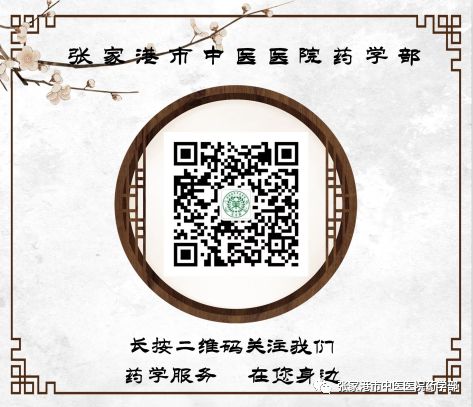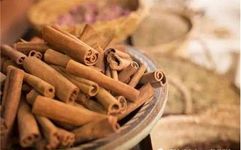ROU GUI
Cinnamon
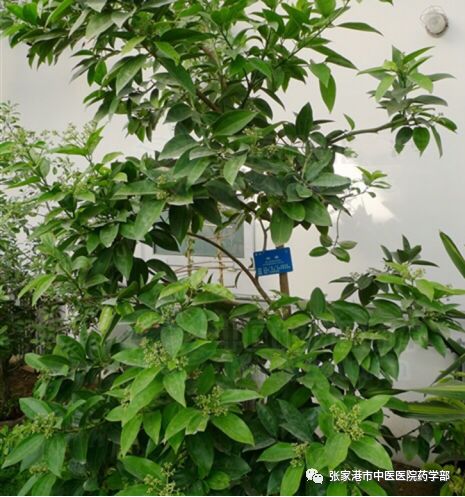
Source: Dried bark of the plant Cinnamomum cassia Presl from the Lauraceae family.
Alias:Mu Gui, Gui, Da Gui, Zi Gui, Da Gui, Yu Gui, etc.
Origin: Mainly produced in Guangdong, Guangxi, Hainan, Yunnan, and other regions.
Common Cultivated Varieties
Currently, the commonly cultivated varieties in China include:1. Chinese Cinnamon (Cinnamomum cassia Presl) 2. Qinghua Cinnamon (Cinnamomum cassia var. macrophylla) 3. Ceylon Cinnamon (Cinnamomum zeylanicum)
Chinese Cinnamon
Primarily produced in southern Guangxi. Guangxi Cinnamon has red bud and white bud varieties, with the white bud variety having the best yield, quality, and resistance. Generally, after 5-6 years of cultivation, the trees can reach about 4 m in height for harvesting, with a maturity period from March to April.

Qinghua Cinnamon
Originally from Vietnam, it is the highest quality cinnamon. Its bark thickness and oil content are higher than that of Chinese Cinnamon, and it has better growth adaptability than Ceylon Cinnamon.

Ceylon Cinnamon
Ceylon Cinnamon is mainly produced in tropical regions such as India, Malaysia, Sri Lanka, and Mauritius.


|Identification of Characteristics|
Shape:
It is tubular or rolled, 30-40 cm long, with a width or diameter of 3-10 cm, and a thickness of about 2-8 mm.
Color:
The outer surface is brown with irregular fine wrinkles and transverse raised pores, sometimes showing grayish-white lichen spots; the inner surface is reddish-brown, smoother with fine longitudinal lines, and oil marks can be seen when scratched with a nail.
Texture:
Hard and brittle, easily broken.
Cross-section:
The cross-section is uneven, with the outer side being brown and rough, the inner side reddish-brown and oily, and a yellow-brown line pattern in the middle.
Odor:
It has a strong aroma, with a sweet and spicy taste. (The sweeter and spicier the cinnamon, the better. Chewing for 1 second should feel like sugar, then after 2-3 seconds, it should feel spicy like chili, and continuing to chew should result in a sweet and spicy mix, with no other flavors present.)
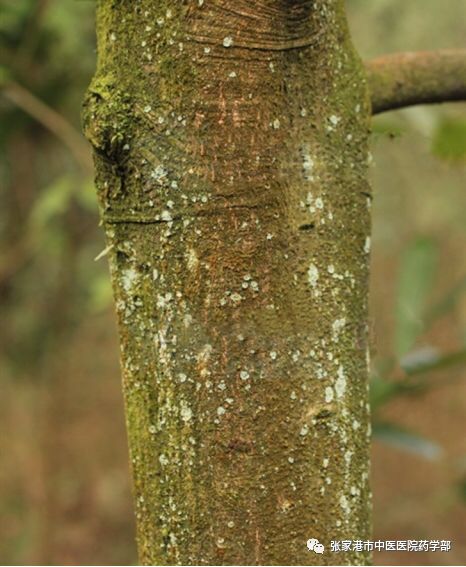
Quality Indicators:
Intact, heavy,
thin outer skin, thick flesh,
purple cross-section, high oil content,
strong aroma, slightly sweet and spicy,
less residue when chewed is preferred.

Discussion
Commercial specifications of traditional cinnamon medicinal materials
1
Qi Bian Gui
Harvested from the smooth, knot-free bark of trees over ten years old, with a bark thickness of about 0.3-0.5 cm, shaped like a ruyi (a traditional Chinese scepter), curling inward on both sides (hence the name Qi Bian), slightly concave in the center, 40-50 cm long, 4.5-6 cm wide, 3-6 mm thick, with both ends slanted and trimmed to expose the heartwood (called “Qian Kou”), the outer skin is gray-brown, rough, with irregular fine lines and oval protrusions with longitudinal cracks, occasionally with gray spots formed by lichen, the inner surface is yellow-brown, uneven, and shows deep brown oil marks when scratched with a nail. It is hard and brittle, easily broken, with a cross-section that is brown-red or purple-red, the outer layer is slightly rough, and the middle has yellow lines, with the inner layer being oily. It has a special strong aroma, with a sweet and slightly spicy taste, and should have little or no residue when chewed.
2
You Gui
You Gui is selected from trees with a bark thickness of over 0.5 cm, with finer cork and higher oil content, unsuitable for processing Qi Bian Gui.
3
Ban Gui
Harvested from the lower part of older cinnamon trees near the ground, in a flat plate shape, with thicker bark. Typically 30-40 cm long, 5-12 cm wide, and over 4 mm thick. The outer skin is rough, and its inner layer and aroma are similar to Qi Bian Gui, but it has less oil and more residue, with a milder aroma and sweet-spicy taste.
4
Guan Gui
The Tang Dynasty’s “Newly Revised Materia Medica” recorded that “Guan Gui” refers to the ancient use of tubular cinnamon. In the Song Dynasty, the name “Guan Gui” first appeared in the “Illustrated Materia Medica.” Li Shizhen corrected this, believing that Guan Gui means high-quality cinnamon. Subsequently, it was also referred to as “Guan Li Rou Gui.” Thus, it is undoubtedly one of the commercial specifications of cinnamon.
 Harvesting and Processing:
Harvesting and Processing:
According to the textbook “Identification of Chinese Medicinal Herbs” published by Shanghai Science and Technology Press, Guan Gui is harvested from the bark of 5-6 year old young trees or coarse branches, dried for 1-2 days, and allowed to naturally roll into single or double cylindrical shapes. According to this, current products include You Gui Tong, Gui Tong (Gui Er Tong), and Guang Tiao Gui, which correspond to the ancient Guan Gui. (You Gui Tong is harvested from the bark of 5-6 year old trees and coarse branches or old tree branches during July-August, dried for 1-2 days, and allowed to naturally roll into single or double cylindrical shapes. Gui Tong is mostly harvested from thinner branches, resembling You Gui Tong, but with thinner bark, less than 0.2 cm thick. The thinner bark processed into rolls is called Guang Tiao Gui.)
 “Guan Gui” and Similar Named Products:
“Guan Gui” and Similar Named Products:
In addition to the Guan Gui produced in Guangdong and Guangxi, Guan Gui produced in parts of Sichuan, Hubei, Yunnan, and Guangxi comes from Chuan Gui; furthermore, in parts of Guangxi and Guangdong, the bark of the closely related wild Huang Gui (Mountain Cinnamon) is used as Guan Gui, while in some areas of Sichuan, the bark of Silver Leaf Camphor and Chai Gui is used as Guan Gui; additionally, it has been reported that in Yunnan, Yin Xiang is used as Guan Gui, and in Anhui, Zhejiang Gui is used as Guan Gui. Chinese medicinal cinnamon not only contains volatile oil, but the main component of the oil is cinnamaldehyde. Chuan Gui (Cinnamomum wilsonii Gamble) and other plants in the Lindera genus do not react with cinnamaldehyde (cinnamaldehyde forms colorless rod-shaped cinnamaldehyde phenylhydrazone crystals with hydrochloric acid), which can be used for differentiation.
5
Gui Xin
The outer cork layer has been removed, presenting yellow-red cinnamon flesh, fine texture, brittle, with a sweet and spicy taste.
6
Gui Sui
The leftover edge fragments during the processing of cinnamon bark, with the cork layer unpeeled, are called Gui Sui.


|Taste and Meridian Entry|
Spicy, sweet, very warm. Enters the Kidney, Spleen, Heart, and Liver meridians.

|Functions|
Supplement fire and assist Yang, dispel cold and relieve pain, warm and unblock meridians, guide fire back to the source.

Main Indications
Yang deficiency syndrome, Kidney Yang deficiency
This product is spicy, sweet, and very warm, capable of supplementing fire and assisting Yang, benefiting Yang and dispelling Yin, with a gentle and lasting effect, making it a key medicine for treating the decline of the fire at the life gate. It is often combined with Fu Zi (Aconite), Shu Di (Rehmannia), and Shan Zhu Yu (Cornus) to treat insufficient Kidney Yang, decline of life gate fire, impotence, cold in the palace, cold pain in the lower back and knees, frequent urination at night, and nocturnal emissions, such as in Shen Qi Wan (“Essentials of Prescriptions from the Golden Cabinet”) and You Gui Yin (“Complete Book of Jing Yue”). This product can also assist Yang while guiding fire downward and promoting the transformation of water and liquid qi, as seen in Jiao Tai Wan for the disharmony of Heart and Kidney, and Tong Guan Wan for the obstruction of qi transformation causing urinary retention.
For Spleen and Kidney Yang deficiency leading to chronic diarrhea and dysentery, and Heart Yang deficiency causing palpitations and shortness of breath, it is often combined with Bai Zhu (Atractylodes), Rou Dou Kou (Nutmeg), Ren Shen (Ginseng), and Huang Qi (Astragalus) for differential treatment.
Cold congealing pain syndrome
Abdominal pain, cold hernia, this product is sweet and warm to assist Yang and replenish deficiency, spicy and warm to dispel cold and relieve pain, effective in removing stubborn cold and deep-seated chill. It can be used alone in powdered form, decocted with wine; or combined with Gan Jiang (Dried Ginger), Gao Liang Jiang (Galangal), and Bi Ba (Cubeb) as in Da Yi Han Wan (“Formulas from the Bureau of Medicinal Preparation”); for cold hernia abdominal pain, it is often combined with Wu Zhu Yu (Evodia) and Xiao Hui Xiang (Fennel).
This product is also used for “treating cold bi syndrome,” thus it can be combined with Du Huo (Angelica Pubescens), Qin Jiao (Gentiana), and Dang Gui (Angelica Sinensis) as in Juan Bi Tang.
Cold congealing blood stasis syndrome
This product is spicy, dispersing, and warming, capable of moving qi and blood, unblocking meridians, and dispelling cold to relieve pain. When combined with Fu Zi, Gan Jiang, and Chuan Jiao (Sichuan Pepper), it can treat chest Yang not thriving, cold evil invading causing chest bi and heart pain, as in Gui Fu Wan (“Prescriptions for Longevity”); when combined with Lu Jiao Jiao (Deer Antler Glue), Pao Jiang (Fried Ginger), and Ma Huang (Ephedra), it can treat Yang deficiency with cold congealing, blood stagnation, and phlegm obstruction causing yin abscess and flowing edema, as in Yang He Tang (“Complete Collection of External Medicine”); if combined with Dang Gui, Chuan Xiong (Chuanxiong), and Xiao Hui Xiang, it can treat cold congealing and blood stagnation causing amenorrhea and dysmenorrhea, as in Shao Fu Zhu Yu Tang (“Corrections in Medical Practice”).
Yang floating syndrome (deficient Yang rising)
This product is very warm, entering the Liver and Kidney, capable of returning the floating Yang caused by the decline of the lower source back to its origin, known as guiding fire back to the source. It is used to treat Yuan Yang deficiency, floating Yang causing facial redness, shortness of breath, sweating, palpitations, insomnia, and weak pulse, often combined with Shan Zhu Yu, Wu Wei Zi (Schisandra), Ren Shen, and Mu Li (Oyster Shell).
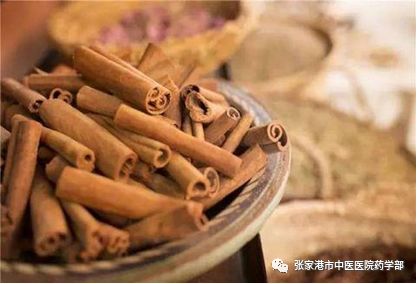
———
Although this product does not have the function of returning Yang to rescue from reversal, when used with Fu Zi, it can enhance the clinical effect of Fu Zi in returning Yang to rescue from reversal, as in the “Treatise on Febrile Diseases” for returning Yang to rescue from reversal decoction. Additionally, for those with chronic illness and deficiency of qi and blood, adding a small amount of cinnamon to qi and blood tonifying formulas can stimulate the growth of qi and blood.
 //
//
Modern Pharmacology
//
Chemical Components
Cinnamon contains rich volatile oils, with the main component being cinnamaldehyde, and also contains o-methoxycinnamaldehyde, trans-cinnamaldehyde, as well as small amounts of cinnamic acid, phenyl acetate, and other compounds. Cinnamon also contains polysaccharides, which are composed of D-xylose and L-arabinose in a 3:4 ratio, and it also contains polyphenolic substances.
Pharmacological Effects
PART 1Anti-gastric ulcer
Cinnamon can enhance the body’s digestive function, moderate the stimulation of the gastrointestinal tract, and eliminate gas accumulation in the digestive tract, alleviating gastrointestinal spasmodic pain.
PART 2Vasodilation
Cinnamaldehyde has vasodilatory effects, lowers blood pressure, promotes blood circulation in the body, alleviates pain in the limbs, and has anti-shock effects.
PART 3Anti-inflammatory
The active components of cinnamon’s hot water extract, including polyphenols and cinnamaldehyde and its derivatives, have certain anti-inflammatory effects.
PART 4Antibacterial
The water extract of cinnamon can significantly inhibit Staphylococcus aureus, Escherichia coli, and others in vitro.
PART 5Antioxidant, anti-tumor
The components such as total phenolic substances, quercetin, and kaempferol have been proven to have good anti-tumor effects in both in vivo and in vitro tests.
PART 6Prevention and treatment of diabetes
Cinnamon proanthocyanidins are the main anti-diabetic chemical components, significantly inhibiting the non-enzymatic glycation of proteins in vitro. This indicates that cinnamon can potentially prevent diabetes and its complications to some extent.

Processing Specifications
Cinnamon
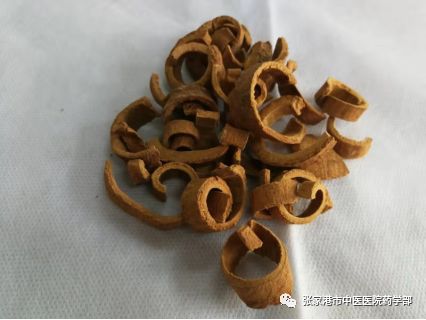
The best cinnamon is harvested from the bark of trees aged thirty to forty years, while in modern times, bark from trees aged over ten years or five to six years is often used. Method: Remove impurities and rough bark. When used, crush it.
 Dosage and Administration
Dosage and Administration
Decocted, 1-5 grams, preferably added later or taken as a powder; powdered form taken at 1-2 grams per dose.
 Precautions
Precautions
This product is spicy and warm, easily depleting Yin and blood, thus it is not suitable for those with Yin deficiency and excess heat, internal heat, or blood heat bleeding. Pregnant women should avoid it. It should not be used with Chi Shi Zhi (Halloysite), Ju Hua (Chrysanthemum), or Yang Ti Cao (Plantago).

Discussion
On the issue of cinnamon’s name and substance in historical materia medica
Answer
01
The historical records of cinnamon in Chinese literature:
“Shan Hai Jing • Nan Shan Jing” states: “The mountain of Zhao Yao, facing the West Sea, has many cinnamons.” The earliest record in materia medica is in “Shen Nong’s Herbal Classic”, which distinguishes between Jun Gui and Mu Gui. “Materia Medica Collected Annotations” also mentions Jun Gui, Gui, and Mu Gui.
“Newly Revised Materia Medica” also lists three types, under the Mu Gui entry stating: “— The small branch bark is thick, half-rolled. The center is wrinkled, with a spicy and pleasant taste. One name is Rou Gui, another is Gui Zhi, and another is Gui Xin.” It also states under the Gui entry: “The tender branch bark of Mu Gui is called Rou Gui, also known as Gui Zhi.” In “Compendium of Materia Medica”, Li Shizhen believes that “Gui is the thick and spicy Mu Gui, while Mu Gui is the thin and mild Gui,” and also states, “Gui is indeed Rou Gui.” “Pharmacological Properties”: Taste is spicy, hot, and toxic. It is the Yang among Yangs. The thin qi is Gui Zhi; the thick qi is Rou Gui. Thin qi disperses, Gui Zhi ascends and disperses; thick qi generates heat, Rou Gui descends and supplements the Kidney—this is the way of heaven and earth connecting above and below.
Thus, it can be seen that the ancient materia medica records of Mu Gui, Gui, Rou Gui, and Gui Xin refer to the same substance. Secondly, the ancient Gui Zhi used for medicinal purposes does not refer to the tender branches we use today, but rather the bark, similar to Rou Gui.
“
02
Research on the medicinal parts of Gui Zhi:
Liu Can Kun and others summarized several points in their article “Research on the Medicinal Parts of Gui Zhi”: 1. Before the Tang Dynasty, Rou Gui and Gui Zhi were the same medicine, differing only in dosage, with each having its own effects, i.e., small amounts in formulas exerting light dispersing effects, while large amounts exerting heavy sinking effects into the organs, but the medicinal parts were branches or tender branch bark; 2. From the Song to the Qing Dynasties, Rou Gui referred to the bark of small cinnamon trees or branch bark, while tender branch bark was Gui Zhi, and the youngest was Liu Gui; 3. The modern Gui Zhi refers to the tender branches of the Lauraceae cinnamon, while Rou Gui refers to the bark or branch bark of the cinnamon tree.
 On the issue of Guan Gui, it has been previously discussed:
On the issue of Guan Gui, it has been previously discussed:
First, Guan Gui in ancient times referred to high-quality cinnamon. Later, it was also referred to as “Guan Li Rou Gui”; second, the current Guan Gui used refers to the bark of young cinnamon trees rolled into cylindrical shapes.
 On the issue of cinnamon bark:
On the issue of cinnamon bark:
Commercial cinnamon bark is often irregularly shaped flat pieces or slightly curved half-tube shapes, with both ends and edges naturally curled up, thin bark, gray-brown surface, relatively flat, with lichen spots, and the broken surface does not show the stripes formed by stone cell layers, containing little oil, with a faint aroma, spicy but not sweet.Commercial cinnamon bark can be divided into two categories: one is the leftover materials from processing Rou Gui or branch bark, mainly for export, known internationally as Guang Nan Gui Pi; the other is the dry bark or branch bark of other plants in the same family. The commonly seen species of cinnamon bark in the domestic market are as follows:
1. Tian Zhu Gui (Cinnamomum japonicum Sieb.)
2. Yin Xiang (Cinnamomum burmannii (C.G. & Th.Nees) Blume.)
3. Xi Ye Xiang Gui (Cinnamomum chingii Metcalf [C.subavenium Miq.])
4. Chai Gui (Cinnamomum tamala (Ham.) Nees et Eberm.) Cinnamon bark is also used medicinally in folk medicine, but more commonly as a spice or seasoning.
 Cinnamon Flower and Cinnamon:
Cinnamon Flower and Cinnamon:
This article refers to cinnamon from the Lauraceae family. The cinnamon flower we often mention during the Mid-Autumn Festival is from the Oleaceae family, and they are not the same variety. During the Tang and Song Dynasties, with the popularity of the Mid-Autumn Festival, cinnamon flowers gradually replaced cinnamon, first due to their flowering period, as cinnamon generally blooms in spring and summer, while cinnamon flowers bloom mostly in autumn, with specific timing influenced by various environmental and climatic factors, but generally around the Mid-Autumn Festival. Additionally, the fragrance of cinnamon flowers is “clear and dust-free, rich and far-reaching,” and during the Mid-Autumn Festival, when the flowers bloom in abundance, the fragrance is overwhelming and delightful. Furthermore, in terms of geographical distribution, cinnamon is mainly found in Yunnan, Guangxi, Guangdong, Fujian, and Taiwan, while cinnamon flowers are widely distributed in most regions of China south of the Qinling Mountains, thus cinnamon flowers have a higher exposure rate and are more widely known. Consequently, cinnamon flowers successfully took the spotlight, becoming an important symbol of the moon and Mid-Autumn Festival.


Author: Traditional Chinese Medicine Pharmacy
Editor: Chen Qianqian
Reviewers: Liu Chundi, Qian Wei
Rational Medication Science Popularization (Public Welfare) Alliance Unit
